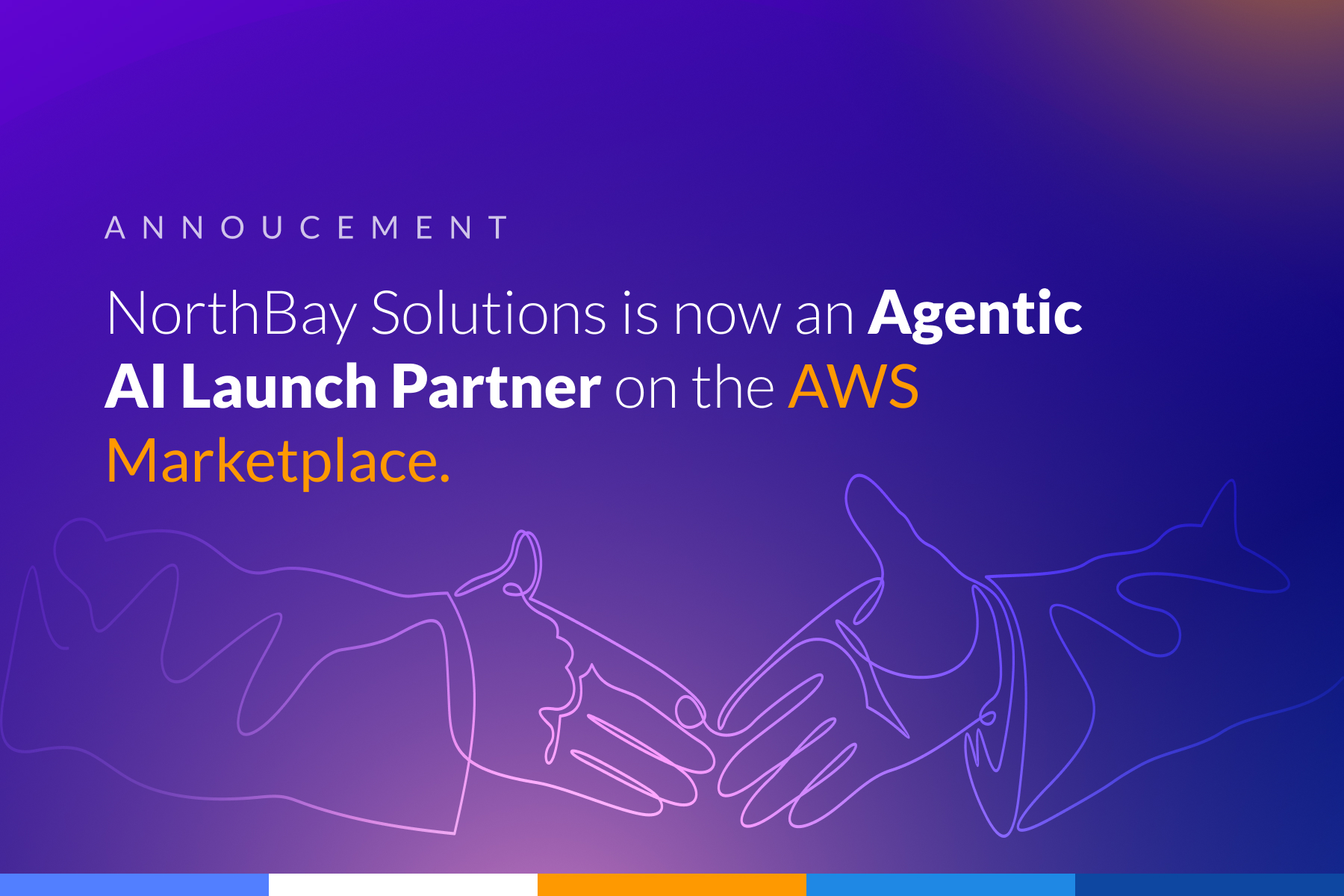
Imagine building a house on a shaky foundation. No matter how expertly you construct the walls or how beautifully you decorate the interior, the entire structure remains at risk. In the world of Generative AI, data quality is that foundation. As organizations rush to harness the power of Generative AI, many overlook this critical element, potentially jeopardizing their entire AI strategy. In this post, we’ll explore why data quality is vital to successful Generative AI implementation, what organizational changes are necessary to support it, and how AWS technologies can help you build a rock-solid data foundation for your AI initiatives. By the end, you’ll understand not just the ‘what’ of data quality for Generative AI, but the ‘why’ and ‘how’ that can set your projects apart.
Data Quality Drives Quality AI
Generative AI, much like traditional machine learning, adheres to the ‘garbage in, garbage out’ principle. This means the quality of AI-generated content is fundamentally tied to the accuracy of its training data. Similar to earlier machine learning systems, Large Language Models (LLMs) learn patterns and relationships within their training data. These learned patterns then form the basis for their output generation. However, this process is highly sensitive to data quality issues:
-
Data Noise:
At its most basic level, poor-quality data introduces noise into the trained model. This noise interferes with the model’s ability to discern meaningful patterns, leading to less accurate and less coherent outputs.
- Biased Outputs: More insidiously, flawed data can introduce bias into the model. This bias can manifest in various ways, from subtle shifts in language tone to more overt imbalances in representation or perspective. Bias data during training limit the model’s ability to generalize across diverse contexts and may lead to unfair or skewed outputs.
- Misinformation: In severe cases, training on inaccurate or false data can result in the model generating outright misinformation, potentially spreading falsehoods at scale.
The consequences of these data quality issues extend beyond mere technical inaccuracies. As users interact with AI systems built on flawed data, they gradually lose trust in the system’s reliability. This erosion of trust can have far-reaching implications:
-
Diminished Utility:
Users may hesitate to rely on the system for critical tasks, significantly limiting its practical usefulness.
- Reduced Adoption: A reputation for unreliability can hinder wider adoption of the AI system within an organization or among potential customers.
- Financial Losses: The costs associated with developing and deploying an AI solution that fails to meet user needs due to data quality issues can be substantial, representing a significant waste of resources.
- Reputational Damage: For businesses, consistently inaccurate or biased AI outputs can lead to reputational damage, potentially affecting customer relationships and market position.
Ensuring high-quality training data is not just a technical necessity, but a critical business imperative for any organization looking to leverage the power of generative AI effectively and responsibly.
Sector Risks of Bad Data Quality
Organizational Changes: Preparing Your Company for GenAI Adoption
Adopting Generative AI in an organization is more than a technical upgrade – it’s a transformative journey that requires changes across the entire company. To fully harness the power of Generative AI, companies need to evolve their structures, processes, and cultures. This section outlines key organizational changes that are crucial for successful Generative AI adoption.
Data Governance: The foundation of any successful AI initiative is high-quality, accessible data. Organizations must implement robust data governance policies and practices to ensure data consistency and availability across all departments. AWS DataZone is a data management service that can help discover, catalog, share and govern data.
Cross-functional Collaboration: Generative AI thrives on diverse perspectives. Creating interdisciplinary teams that combine domain experts, data scientists, and AI specialists is crucial. Fostering collaboration between IT, business units, and AI teams can lead to more innovative and effective AI solutions.
Leadership and Strategy: Strong leadership is essential for successful AI adoption. This may involve appointing dedicated AI/ML leadership roles, such as a Chief AI Officer or Chief Data Officer. Developing a clear AI strategy that aligns with overall business goals and securing executive buy-in are also critical steps.
Skills and Training: To fully leverage Generative AI, organizations must invest in their people. This includes upskilling existing employees on AI fundamentals, recruiting specialized AI/ML talent, and developing AI literacy programs for all levels of the organization.
Ethics and Responsible AI: Depending on the organization and use case, ethical considerations can be a priority. Establishing an AI ethics committee, developing guidelines for responsible AI use, and implementing ongoing monitoring processes are essential for maintaining trust and mitigating risks.
IT Infrastructure and Security: Generative AI requires significant computing power. Organizations must invest in necessary resources for scalability such as GPUs and cloud computing solutions. Equally important is ensuring robust cybersecurity measures to protect AI systems and sensitive data.
Process Redesign: Integrating Generative AI often means reimagining existing workflows. Organizations should identify and redesign business processes to incorporate AI capabilities, developing new workflows that optimize human-AI collaboration.
Change Management: Effective communication about AI initiatives and addressing employee concerns regarding AI’s impact on jobs are crucial for smooth adoption. A well-planned change management strategy can help overcome resistance and foster enthusiasm for AI-driven transformation.
Legal and Compliance: The rapidly evolving Generative AI landscape brings new regulatory challenges. Organizations must stay informed about AI-related regulations and ensure compliance. This may involve updating contracts and agreements to address AI-specific concerns.
Innovation Culture: Successful Generative AI adoption thrives in a culture of innovation. Organizations should foster an environment that encourages experimentation, continuous learning, and employee-driven identification of potential AI use cases.
Metrics and KPIs: To gauge the success of Generative AI initiatives, organizations need to develop new metrics and align AI project goals with broader organizational KPIs. This ensures that AI efforts contribute meaningfully to overall business objectives.
Consulting firms implementing Generative AI tools trained on high-quality data could see improvements in employee productivity and job satisfaction. Consultants could focus more on high-value tasks like strategy development and client relationships, while AI handles routine data analysis and query responses.
Data Readiness with AWS: Empowering Your Generative AI Journey
As organizations prepare for their Generative AI journey, ensuring data readiness becomes paramount. But what does ‘data readiness’ really mean in the context of Generative AI, and how can you achieve it? This section explores the multifaceted aspects of data readiness and introduces AWS services that can help address these challenges. From data quality and volume to security and scalability, we’ll uncover how AWS can empower your Generative AI initiatives with robust data infrastructure.
Data Quality and Cleansing: Ensuring data is complete, accurate, consistent, unique, and free from errors is paramount for Generative AI success.
Amazon SageMaker Data Wrangler provides a visual interface for data exploration and transformation. For automated cleansing and profiling, AWS Glue DataBrew offers a serverless solution with built-in data quality checks.
Data Volume, Balance, and Diversity: Generative AI models require large, balanced, and diverse datasets to generalize well and avoid bias. Imbalanced datasets can lead to biased models that perform poorly in real-world scenarios. If a dataset predominantly expresses one viewpoint over another, it may generate content reflecting this bias. Foundation Models require highly diverse datasets to generate content that is varied and rich in context. The data must represent a wide range of scenarios, styles, and contexts to avoid generating biased, repetitive, or low-quality outputs.
Amazon S3 provides scalable object storage capable of handling vast datasets. Amazon SageMaker Ground Truth uses a human-in-the-loop labeling workforce. It enables customers to prepare high-quality, large-scale training datasets to fine-tune foundation models to perform human-like generative AI tasks and align them to human preferences. These services allow organizations to build and maintain the robust data foundations necessary for effective Generative AI applications.
Contextual Richness and Relevance: For Generative AI to generate high-quality outputs, data must include rich contextual information and be relevant to the problem at hand. Some RAG solutions leverage metadata to improve retrieval and generation.
AWS offers specialized services to enhance data context. Amazon Comprehend provides natural language processing for text analysis, while Amazon Recognition offers image and video analysis for visual data, helping to extract deeper meaning and context from diverse data types.
Bias Detection and Ethical Considerations: Identifying and mitigating bias in data is crucial to prevent harmful or inappropriate outputs from Generative AI systems. Ensuring ethical use of data is paramount, requiring more stringent bias detection and mitigation strategies.
Amazon SageMaker Clarify helps detect bias in datasets and models.
Data Availability and Integration: Successful Generative AI implementation requires seamless access to and integration of data from various sources. This may involve data cleansing, merging, joining, and alignment of historical data, real-time data, structured and unstructured data.
AWS Glue offers a serverless data integration service, while Amazon EMR facilitates big data processing using the Hadoop ecosystem.
Data Annotation and Labeling: Accurate model training depends on correctly labeled and tagged data. This means that input data should be associated with the correct output, which can be a time-consuming process.
Amazon SageMaker Ground Truth uses a human-in-the-loop labeling approach to prepare high-quality training datasets. This service helps organizations efficiently create the labeled data necessary for fine-tuning foundation models and aligning them with human preferences.
Data Security and Privacy: Protecting sensitive information and complying with privacy regulations is non-negotiable in Generative AI development.
AWS provides comprehensive security solutions: AWS Identity and Access Management (IAM) for fine-grained access control, Amazon Macie for discovering and protecting sensitive data, and AWS Key Management Service (KMS) for managing encryption keys.
Data Versioning and Documentation: Tracking dataset versions and documenting changes over time is crucial for reproducibility and auditing.
The AWS Glue Data Catalog serves as a central metadata repository, while Amazon S3 Versioning allows tracking of multiple object versions. These services help maintain a clear history of data evolution throughout the Generative AI development process.
Data Analysis and Visualization: Gaining insights from your data can inform and improve Generative AI development.
Amazon QuickSight offers powerful business intelligence capabilities for data insights, while Amazon Athena provides an interactive query service for S3 data. AWS Sagemaker offers Jupyter Notebook environments for data exploration. These tools help teams understand their data better, leading to more informed decisions in Generative AI projects.
Scalability and Performance: As Generative AI projects grow, so do their data demands.
Amazon CloudFront provides a content delivery network for faster data access. These services ensure that your data infrastructure can handle the growing demands of Generative AI applications without compromising performance.
By leveraging these AWS services, organizations can streamline their data readiness process, ensuring high-quality, diverse, and ethically sound datasets for Generative AI applications. The integration of these tools creates a robust ecosystem that addresses the complexities of data preparation while providing the flexibility to adapt to evolving AI needs.
Benefits
Investing in data quality for Generative AI isn’t just about avoiding pitfalls—it’s about unlocking a wealth of opportunities. When organizations prioritize data quality, they open doors to numerous benefits that can transform their operations and give them a competitive edge. In this section, we’ll explore the tangible advantages of maintaining high-quality data for Generative AI, from improved efficiency to enhanced decision-making and beyond.
Reduced model training time: High-quality, well-prepared data accelerates the training process for Large Language Models (LLMs). This efficiency translates directly into cost savings, as LLM fine-tuning typically requires expensive, high-performance hardware.
For example, banks and investment firms could iterate more quickly on their models, allowing them to adapt to market changes more rapidly and potentially gain a competitive edge.
Improved decision-making accuracy: Generative AI models trained on high-quality data leads to more accurate insights, enabling better informed decisions across all levels of the organization and resulting in cost savings.
The healthcare industry could benefit from this through earlier detection of diseases, more personalized treatment plans, and ultimately better patient outcomes. It could also help reduce unnecessary tests and treatments, potentially lowering healthcare costs.
Enhanced customer experience: Generative AI models trained on clean, comprehensive data can provide more personalized and relevant interactions, significantly improving customer satisfaction and loyalty.
Retail companies could use Generative AI chatbots trained on high-quality customer interaction data to provide more personalized and efficient customer service. These chatbots could better understand context and provide more accurate, helpful responses, leading to improved customer satisfaction and potentially reducing the workload on human customer service representatives.
Increased operational efficiency: AI systems built on clean, well-structured data can automate processes more effectively, reducing errors and saving time and resources.
Manufacturing could benefit with more accurate demand forecasting, better inventory management, and smoother production processes. Manufacturers might see improvements in on-time deliveries and reductions in inventory costs.
Mitigated risks: Properly governed data and ethical AI practices help reduce the risk of biased outputs, regulatory non-compliance, and potential reputational damage.
Financial institutions could benefit from reduced bias in AI-driven decision-making processes, such as loan approvals. By using high-quality, diverse data sets, these institutions could create fairer systems that are more likely to comply with regulations. This could help protect the company from legal issues and enhance their reputation for ethical practices.
Faster innovation cycles: With a solid data infrastructure and cross-functional collaboration, organizations can develop and deploy AI solutions more rapidly, staying ahead of competitors.
A software company could quickly analyze well-curated user interaction data to help drive improvements in areas such as user interface design, feature recommendations, and automated task suggestions.
Improved employee satisfaction: As employees become more AI-literate and see the benefits of AI in their work, job satisfaction and productivity can increase.
Consulting firms implementing Generative AI tools trained on high-quality data could see improvements in employee productivity and job satisfaction. Consultants could focus more on high-value tasks like strategy development and client relationships, while AI handles routine data analysis and query responses.
Conclusion
As we’ve explored, the success of Generative AI initiatives hinges on the quality of data that powers them. From reducing training time and improving decision-making accuracy to enhancing customer experiences and driving innovation, the benefits of prioritizing data quality are clear and far-reaching.
Organizations embarking on their Generative AI journey must recognize that success lies not just in acquiring cutting-edge technology, but in fostering a data-centric culture. This involves implementing robust data governance practices, investing in data quality tools and processes, and cultivating cross-functional collaboration.
As you consider your own Generative AI initiatives, ask yourself: Is your organization truly data-ready? Are you building on a solid foundation, or are you risking your AI future on shaky ground? By prioritizing data quality and leveraging powerful tools like those offered by AWS, you can ensure that your Generative AI projects don’t just get off the ground but soar to new heights of innovation and efficiency.
The future of AI is here, and it’s built on quality data. Are you ready to lead the charge?
About NorthBay Solutions
NorthBay Solutions is a leading provider of cutting-edge technology solutions, specializing in Agentic AI, Generative AI MSP, Generative AI, Cloud Migration, ML/AI, Data Lakes and Analytics, and Managed Services. As an AWS Premier Partner, we leverage the power of the cloud to deliver innovative and scalable solutions to clients across various industries, including Healthcare, Fintech, Logistics, Manufacturing, Retail, and Education.
Our commitment to AWS extends to our partnerships with industry-leading companies like CloudRail-IIOT, RiverMeadow, and Snowflake. These collaborations enable us to offer comprehensive and tailored solutions that seamlessly integrate with AWS services, providing our clients with the best possible value and flexibility.
With a global footprint spanning the NAMER (US & Canada), MEA (Kuwait, Qatar, UAE, KSA & Africa), Turkey, APAC (including Indonesia, Singapore, and Hong Kong), NorthBay Solutions is committed to providing exceptional service and support to businesses worldwide.





